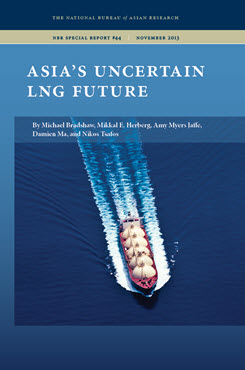Russian LNG Exports to Asia
Current Status and Future Prospects
This essay examines the key drivers that are leading Russia to want to expand its LNG exports to Asian markets and evaluates the prospects for the various projects now under development in the Russian Far East.
EXECUTIVE SUMMARY
This essay examines the key drivers that are leading Russia to want to expand its LNG exports to Asian markets and evaluates the prospects for the various projects now under development in the Russian Far East.
MAIN ARGUMENT
The current desire on the part of the Russian government to expand LNG exports from the Russian Far East is a response to three policy drivers: first, the need to promote the economic development of the region; second, in the face of increased competition in Europe, the need to create new gas market opportunities in Asia; and third, the desire on the part of the Russian government to gain a 20% share of the global LNG market by 2030. To date, Gazprom has been given a monopoly over gas exports; however, the liberalization of LNG exports is resulting in competing projects in Russia vying to gain new market share in what promises to be a very competitive Asian market toward the end of this decade. Nonetheless, if political considerations continue to override commercial logic, it may well be that Russia will fail to realize its plans to expand LNG exports to Asia.
POLICY IMPLICATIONS
- In the face of increasing competition in Europe, Gazprom needs to create new market opportunities in the highly dynamic, but increasingly competitive, Asian gas market; however, it has no experience in developing new markets and is making very slow progress (though this situation would change if a deal were signed with China).
- Gazprom’s Eastern Gas Program commits the state-controlled company to massive investments, but the net financial return on these investments is unclear, and they could have a negative impact on the company’s performance.
- The liberalization of Russian LNG exports means that the new entrants—Rosneft and Novatek—will complete with Gazprom to expand exports to Asia. It is unlikely that all these projects will proceed as announced, but the one project that could compete with LNG projects outside Russia—the expansion of Sakhalin-2—is on hold due to Gazprom’s focus on an alternative project at Vladivostok.


